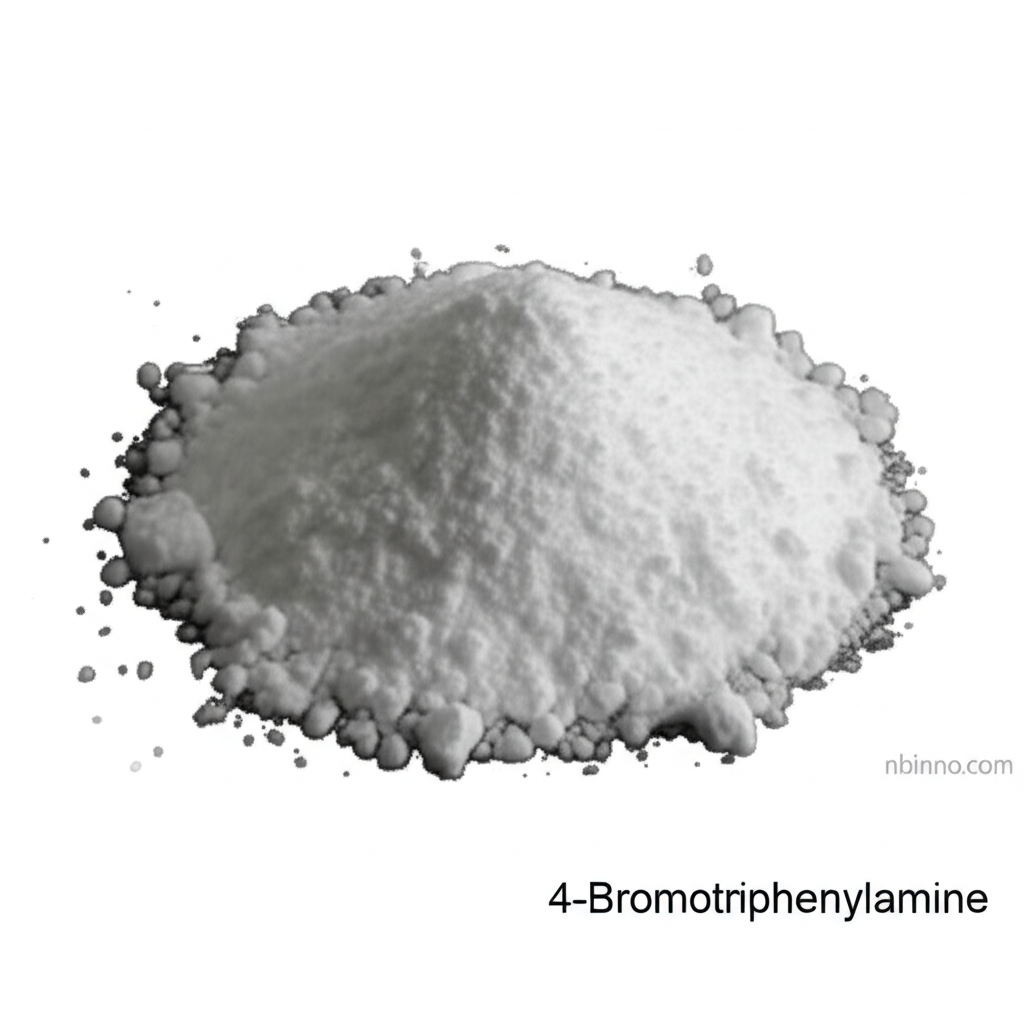4-Bromotriphenylamine CAS 36809-26-4: A Comprehensive Guide
Discover the essential properties, applications, and synthesis of this key organic intermediate.
Get a Quote & SampleProduct Core Value

4-Bromotriphenylamine
4-Bromotriphenylamine serves as a vital building block in the chemical industry, particularly in the synthesis of advanced materials and pharmaceuticals. Its unique structure makes it indispensable for creating complex organic molecules.
- As a key pharmaceutical intermediate, 4-Bromotriphenylamine facilitates the development of novel drug candidates, contributing to advancements in healthcare.
- The compound is crucial for synthesizing fluorescent probe molecules, enabling sensitive detection of analytes like mercury ions with rapid response times.
- Its utility extends to the field of electronics, where it can be used in the creation of OLED materials, pushing the boundaries of display technology.
- Researchers leverage 4-Bromotriphenylamine for diverse organic synthesis pathways, exploring new chemical reactions and molecular architectures.
Key Advantages and Features
High Purity and Quality
Ensuring consistent product performance, 4-Bromotriphenylamine is supplied with high purity levels, often exceeding 97%, meeting the stringent demands of laboratory research and industrial applications.
Versatile Synthesis Applications
This compound is a cornerstone for creating intricate molecules, supporting a wide array of organic synthesis projects, from new materials to complex drug intermediates.
Enabling Advanced Materials
Its role in developing materials like fluorescent probes and OLED components highlights its importance in cutting-edge technological advancements.
Key Applications
Pharmaceutical Intermediates
Utilized in the synthesis of active pharmaceutical ingredients (APIs) and complex drug molecules, supporting the pharmaceutical industry's innovation pipeline.
Organic Synthesis Building Block
Serves as a versatile building block for a wide range of organic chemistry reactions, enabling the creation of novel compounds with tailored properties.
OLED and Photoelectric Materials
Key component in the development of organic light-emitting diode (OLED) materials and other photoelectric applications, contributing to advanced electronic devices.
Chemical Research and Development
Essential for R&D activities, including the synthesis of fluorescent probes for environmental monitoring and analytical chemistry applications.
